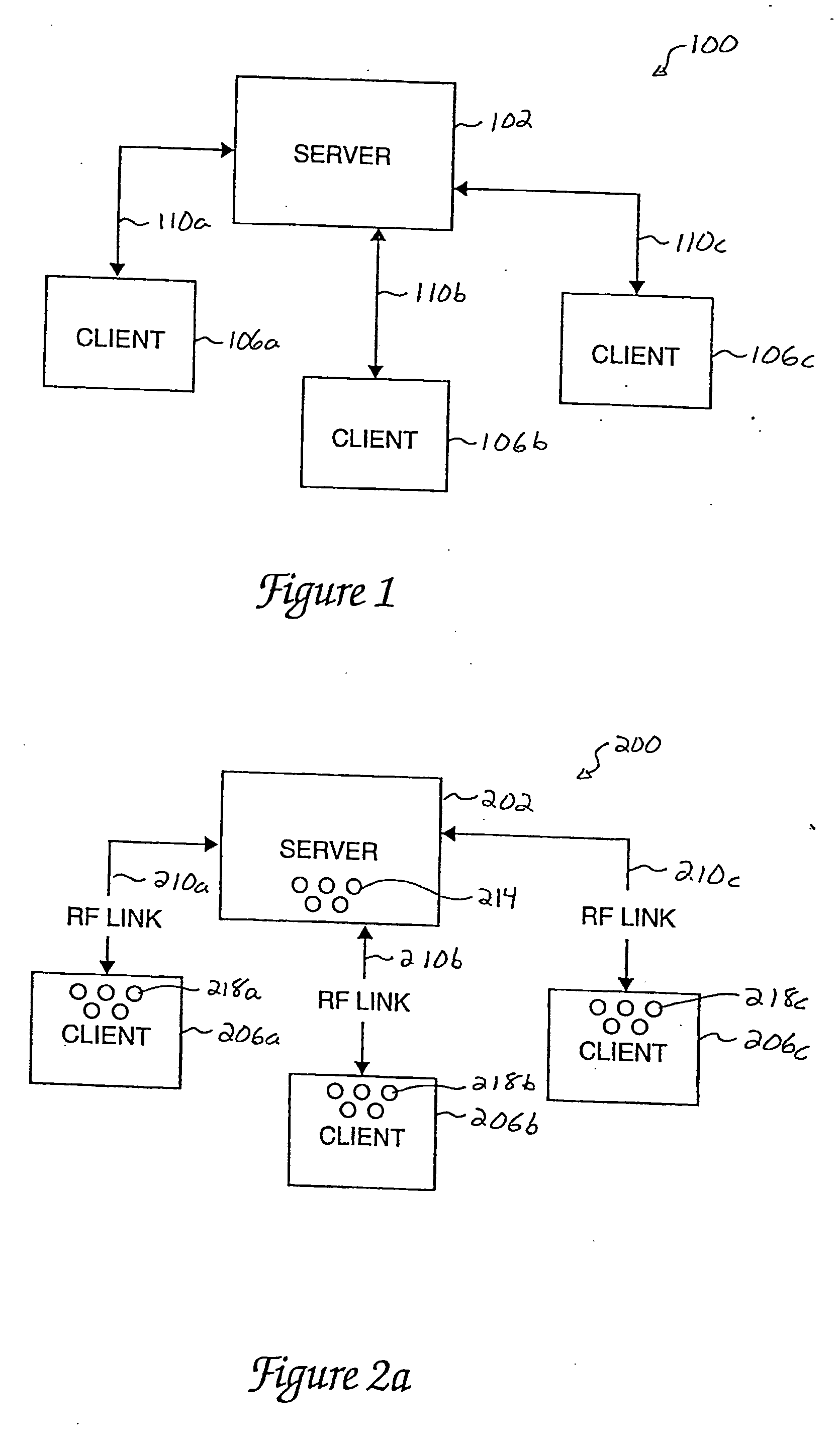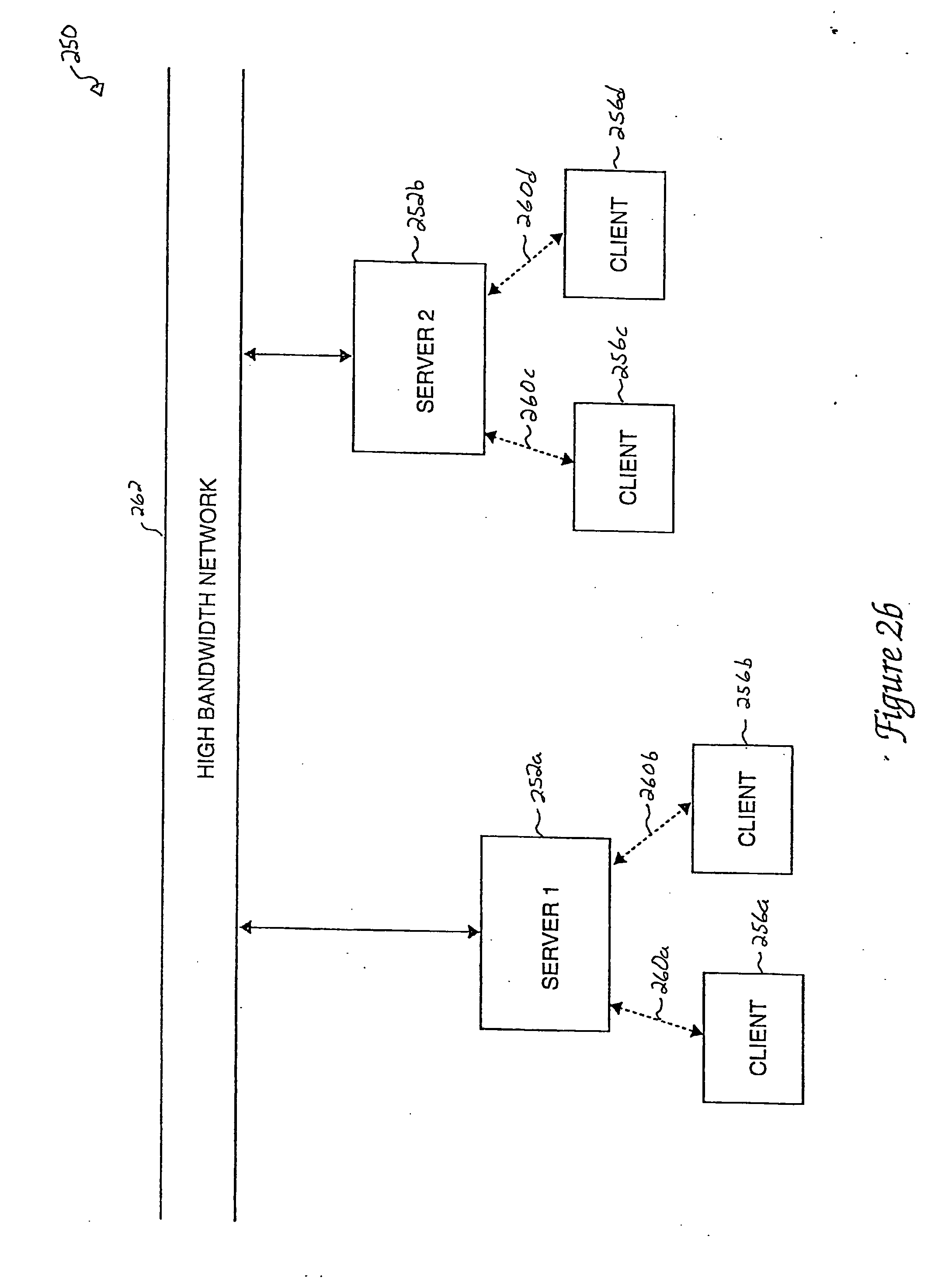Method and apparatus for updating information in a low-bandwidth client/server object-oriented system
a client/server object-oriented, low-bandwidth technology, applied in the direction of instruments, digital computers, computing, etc., can solve the problems of low-bandwidth links, inefficient allocation of resources associated with the client, inefficient maintenance of updated information, etc., and achieve the effect of efficient maintenance of updated information
- Summary
- Abstract
- Description
- Claims
- Application Information
AI Technical Summary
Benefits of technology
Problems solved by technology
Method used
Image
Examples
Embodiment Construction
[0050] Intermittent links, such as radio frequency (RF) links, are often used in client / server object-oriented computing systems when the location of a client, with respect to a server, may vary. Such clients are generally considered to be “out in the field” with respect to a server. Systems with clients that are out in the field may include, but are not limited to, clients that are associated with mobile military operations, clients that are associated with emergency activities, and clients that are associated with mobile sales forces.
[0051] When a client and a server are communicably linked using an intermittent, low-bandwidth link, when clients move, the clients may move in and out of the range of the server. For example, when the client and the server are arranged in communication over a RF link, the client may move to a position or a location which is not in the RF range of the server. When the client is out of the RF range of the server, the client typically may not communica...
PUM
 Login to View More
Login to View More Abstract
Description
Claims
Application Information
 Login to View More
Login to View More - R&D
- Intellectual Property
- Life Sciences
- Materials
- Tech Scout
- Unparalleled Data Quality
- Higher Quality Content
- 60% Fewer Hallucinations
Browse by: Latest US Patents, China's latest patents, Technical Efficacy Thesaurus, Application Domain, Technology Topic, Popular Technical Reports.
© 2025 PatSnap. All rights reserved.Legal|Privacy policy|Modern Slavery Act Transparency Statement|Sitemap|About US| Contact US: help@patsnap.com



